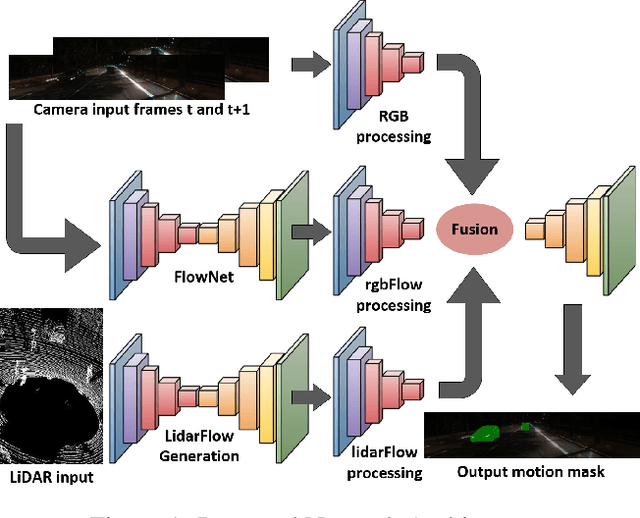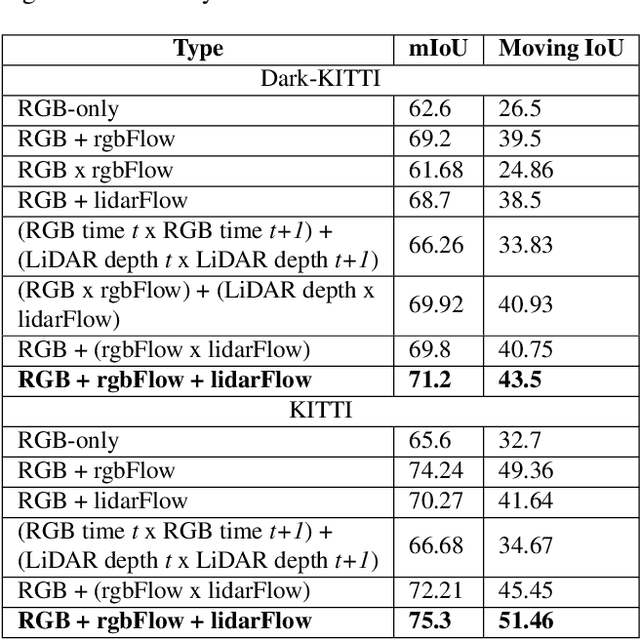Mohamed Ramzy
RST-MODNet: Real-time Spatio-temporal Moving Object Detection for Autonomous Driving
Dec 01, 2019



Abstract:Moving Object Detection (MOD) is a critical task for autonomous vehicles as moving objects represent higher collision risk than static ones. The trajectory of the ego-vehicle is planned based on the future states of detected moving objects. It is quite challenging as the ego-motion has to be modelled and compensated to be able to understand the motion of the surrounding objects. In this work, we propose a real-time end-to-end CNN architecture for MOD utilizing spatio-temporal context to improve robustness. We construct a novel time-aware architecture exploiting temporal motion information embedded within sequential images in addition to explicit motion maps using optical flow images.We demonstrate the impact of our algorithm on KITTI dataset where we obtain an improvement of 8% relative to the baselines. We compare our algorithm with state-of-the-art methods and achieve competitive results on KITTI-Motion dataset in terms of accuracy at three times better run-time. The proposed algorithm runs at 23 fps on a standard desktop GPU targeting deployment on embedded platforms.
FuseMODNet: Real-Time Camera and LiDAR based Moving Object Detection for robust low-light Autonomous Driving
Nov 21, 2019



Abstract:Moving object detection is a critical task for autonomous vehicles. As dynamic objects represent higher collision risk than static ones, our own ego-trajectories have to be planned attending to the future states of the moving elements of the scene. Motion can be perceived using temporal information such as optical flow. Conventional optical flow computation is based on camera sensors only, which makes it prone to failure in conditions with low illumination. On the other hand, LiDAR sensors are independent of illumination, as they measure the time-of-flight of their own emitted lasers. In this work, we propose a robust and real-time CNN architecture for Moving Object Detection (MOD) under low-light conditions by capturing motion information from both camera and LiDAR sensors. We demonstrate the impact of our algorithm on KITTI dataset where we simulate a low-light environment creating a novel dataset "Dark KITTI". We obtain a 10.1% relative improvement on Dark-KITTI, and a 4.25% improvement on standard KITTI relative to our baselines. The proposed algorithm runs at 18 fps on a standard desktop GPU using $256\times1224$ resolution images.
 Add to Chrome
Add to Chrome Add to Firefox
Add to Firefox Add to Edge
Add to Edge